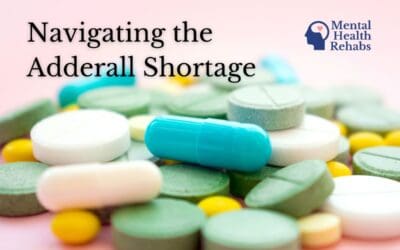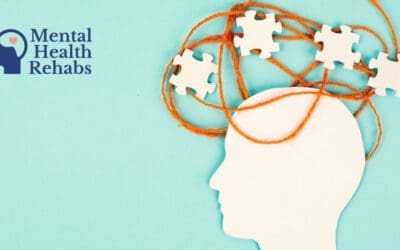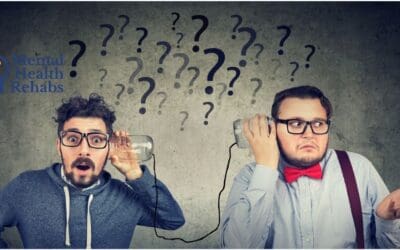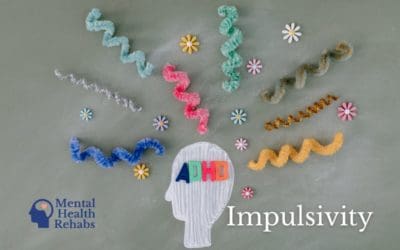ADHD (Attention Deficit Hyperactivity Disorder).
An estimated 4.4% of adults aged 18-44 have ADHD.

What is ADHD?
Attention deficit hyperactivity disorder (ADHD) is a condition characterized by inattention, hyperactivity, and impulsivity.
ADHD is a condition most commonly diagnosed in young people, with almost 9% of children aged 4-17 having ADHD. It is a prevalent condition with more than 3 million cases per year reported in the United States.
Symptoms
In children, many of the behaviors associated with ADHD are considered normal. In part, this is what makes this condition so difficult to diagnose. An estimated 9.4% of children (6.1 million) are diagnosed with ADHD at some point in their childhood. However, any individuals who exhibit these behaviors for more than six months are likely to have attention deficit hyperactivity disorder.
Symptoms of inattention:
- Becoming easily distracted
- Becoming bored with a task quickly and easily
- Difficulty focusing attention or completing a task or activity
- Trouble completing or turning in assignments
- Losing things easily
- Not listening or paying attention when spoken to
- Daydreaming or wandering with lack of motivation
- Difficulty processing information
- Difficulty in following directions
Symptoms of hyperactivity:
- Having trouble staying still
- Non-stop talking
- Touching or playing with everything
- Fidgeting
- Difficulty doing quiet tasks or activities
Symptoms of impulsivity:
- Impatience
- Acting without regard for consequence
- Difficulty taking turns
- Interrupting others
Causes
The specific cause of ADHD remains unknown. Current evidence points to genetics, environmental risks, brain injury, and other factors that play an essential role. So far, evidence shows that:
- 3 out of 4 children with ADHD have a relative with the disorder, meaning genetics play a role.
- Being born prematurely or with low birth weight might also be a factor.
- Exposure to environmental factors like exposure to lead during pregnancy or at a young age can be another factor.
- Alcohol and tobacco use during pregnancy can contribute to ADHD.
However, research has not yet found a connection between ADHD and overeating sugar, watching too much television, parental styles, or social, environmental factors.
Types of ADHD
There are three types of ADHD, depending on which types of symptoms are strongest.
- Predominantly inattentive symptoms: Individuals have difficulty organizing or finishing a task, paying attention to details, or following instructions. These people are easily distracted or forget details even of their daily routines.
- Predominantly hyperactive-impulsive symptoms: Individuals fidget and talk a lot. For them, sitting still for even a meal is almost impossible. In children, they may run and jump constantly. It’s common for these people to feel restless and have trouble with impulsivity. They’re often more prone to injuries and accidents than others.
- Combined presentations: In this case, individuals exhibit symptoms of the above two types at equal intensity.
Diagnosis
ADHD can be difficult to diagnose, particularly in children. As of today, there isn’t a single test to diagnose ADHD. To meet the criteria for ADHD, individuals need to meet the following standards:
- Exhibit six or more symptoms of ADHD for at least six months to the extent that it’s disruptive for the person’s developmental level.
- Proof that several of these symptoms were present before age 12.
- Several symptoms must be present in two or more settings (i.ie., at home, school, or work, with friends and family, or other activities).
- Symptoms are interfering with the quality of school, work, or social functioning.
- The symptoms cannot be better explained by other mental disorders.
- The symptoms do not happen during a psychotic episode.
Generalized Anxiety Disorder
Panic Disorder
Acute Anxiety
Treatment for ADHD
Fortunately, ADHD can be managed and treated in several ways. In most cases, it will involve a combination of behavioral therapies and medications. However, the course of treatment will be entirely dependent on a person’s needs and symptoms.
Behavioral Therapies
The goal of behavioral therapy is to help patients learn and strengthen positive behaviors while addressing unwanted ones. For children with ADHD, both children and parents receive training in behavior management to address problem behaviors. Behavioral therapy has been proven to help reduce ADHD behaviors and promote overall mental health wellness.
Medications
For both children and adults, medications can help patients manage their ADHD symptoms. In most cases, medication is only recommended when symptoms begin to disrupt everyday life. There are several FDA-approved medications to treat ADHD, including some stimulants and non-stimulant drugs such as Strattera (atomoxetine), Intuniv (guanfacine), and Kapvay (clonidine).
Adderall
Ritalin
Concerta
Related Conditions
About two-thirds of children with ADHD will also have another condition. In adults, ADHD may co-occur with other mental health conditions. The most common related conditions for ADHD include:
- Learning disabilities
- Autism spectrum disorder
- Social communication disorder
- Oppositional defiant disorder
- Conduct disorders
- Anxiety
- Depression
- Obsessive-compulsive disorder (OCD)
- Bipolar disorder
- Tourette’s syndrome
- Sleep disorders
- Substance use disorders
Getting Help
If you or your doctor have concerns about ADHD, it’s essential to consult with a specialist. ADHD can last into adulthood, with many adults living with undiagnosed ADHD leading to other conditions, including substance abuse. Getting help for ADHD is easier. The Center for Disease Control and Prevention offers the National Resource Center on ADHD to help children and adults with ADHD. The sooner you get help, the sooner you can start working on managing your symptoms.
Related Articles
Navigating the Adderall Shortage: Managing ADHD Without Medication
"Sorry, we cannot fill your Adderall prescription and do not know when we will have more in stock. Please contact your prescribing doctor to discuss alternatives." For someone struggling with ADHD, these can be scary words. Before you even have a chance to...
What are the 9 Symptoms of ADHD?
Despite its name, attention deficit hyperactivity disorder (ADHD) involves more than trouble focusing and impulsivity. It’s characterized by symptoms that fall into two main categories: inattention and hyperactivity/impulsivity. According to the DSM-5, there are nine...
How Does ADHD Affect Communication Adults
Attention deficit hyperactivity disorder, better known as ADHD, is one of the most common mental health disorders among children. Since it rarely ever goes away for good, ADHD issues can be carried long into adulthood. One of the most troublesome things for an ADHD...
5 Examples of ADHD Impulsivity
From elementary to high school, most of us had at least one classmate who was talkative, fidgety, constantly daydreaming, or otherwise couldn’t seem to follow the teacher’s directions. These individuals were often mislabeled as troublemakers, kids that misbehaved...
Don’t Struggle Alone.
Get Help Today.
Reaching out for help for yourself or a loved one can be overwhelming and stressful, but it doesn’t have to be. If you are struggling to find the right help, or even know where to get started, please feel free to call our 24/7 helpline.
Begin your mental health journey right now!





